Numerical Parameter Analysis of High-Strength Steel Frame with Y-Eccentric Brace Using Variable Replaceable Link
Abstract
:1. Introduction
2. Finite Element Model Validation
2.1. Loading Protocol
2.2. Finite Element Simulation
2.3. Defining the Initial Defect
2.4. Comparison of Finite Element Simulation and Test Results
3. Finite Element Model Parameter Design
- (1)
- The stress in the link reached the ultimate stress of the material.
- (2)
- The plastic strain in the high-strength bolts reached the ultimate strain of the material.
- (3)
- The stress at any cross-section of the frame beams, columns, or other components reached the yield stress, resulting in plastic hinge formation.
4. Analysis of Specimen Parameters
4.1. Analysis of Finite Element Results for D-Series Specimens
4.1.1. Hysteresis Curve Analysis of D-Series Specimens
4.1.2. Analysis of Bearing Capacity, Plastic Rotation and Ductility of D-Series Specimens
4.1.3. Failure Mode of D-Series Specimens
4.2. Analysis of Finite Element Results for L-Series Specimens
4.2.1. Hysteresis Curve Analysis of L-Series Specimens
4.2.2. Analysis of Bearing Capacity, Plastic Rotation, and Ductility of L-Series Specimens
4.2.3. Failure Mode of L-Series Specimens
4.3. Analysis of Finite Element Results for K-Series Specimens
4.3.1. Hysteresis Curve Analysis of K-Series Specimens
4.3.2. Analysis of Bearing Capacity, Plastic Rotation, and Ductility of K-Series Specimens
4.3.3. Failure Mode of K-Series Specimens
4.4. Analysis of Finite Element Results for H-Series Specimens
4.4.1. Hysteresis Curve Analysis of H-Series Specimens
4.4.2. Analysis of Bearing Capacity, Plastic Rotation, and Ductility of H-Series Specimens
4.4.3. Failure Mode of H-Series Specimens
5. Conclusions
- (1)
- The BASE specimen demonstrated that a Y-shaped eccentrically braced steel frame with high-strength steel replaceable links effectively dissipated energy. Under horizontal loading, plastic strain primarily occurred in the energy-dissipating region. In the ultimate conditions, both the beams and columns underwent plastic deformation, thereby validating the performance-based design.
- (2)
- For the structures incorporating different steel combinations, plastic strain was predominantly localized within the energy-dissipating region. Utilizing higher-grade steel for beams, columns, and end plates enhanced the plastic strain concentration in the energy-dissipating beam segment while reducing it in the non-energy-dissipating components, thereby facilitating easier replacement of links following seismic events.
- (3)
- The specimens demonstrated exceptional ductility, with enhanced load-bearing capacity and ductility observed as the span length decreased.
- (4)
- The plastic strain was primarily concentrated in the energy-dissipating region, while stress was predominantly localized on the lower flange of the frame beam connected to the link. Shorter energy-dissipating regions enhanced both the ductility and load-bearing capacity. However, they also resulted in increased plastic rotation within the link. The flange end plates of the frame beam underwent limited plastic deformation, thereby allowing for potential replacement of the link.
- (5)
- The reduction in the plastic rotation and load-carrying capacity, resulting from an increase in the link length, hampered effective energy dissipation and complicated link replacement following strong seismic events. An excessive link length can induce flange buckling, impeding efficient energy dissipation.
- (1)
- This study primarily employed the finite element method to analyze the seismic behavior of the new Y-shaped eccentrically braced structure. Due to various factors influencing the computational process, there may be fluctuations in the accuracy of the simulation results. Hence, additional experimental research is necessary.
- (2)
- This study only considered four parameters which affect structural seismic performance. Future research could explore other influential factors.
Author Contributions
Funding
Data Availability Statement
Conflicts of Interest
References
- Li, T.; Su, M.; Guo, J.; Zhao, K.; Zhang, Q. Seismic performance evaluation of Y-shaped eccentric brace–high-strength steel frame structure based on remote collaborative hybrid test. Soil Dyn. Earthq. Eng. 2023, 164, 107621. [Google Scholar] [CrossRef]
- GB50011-2010; Code for Seismic Design of Buildings. China Architecture and Building Press: Beijing, China, 2016.
- Keivan, A.; Zhang, Y. Nonlinear seismic performance of Y-type self-centering steel eccentrically braced frame buildings. Eng. Struct. 2019, 179, 448–459. [Google Scholar] [CrossRef]
- Ma, X.; Zhang, X.; Zhang, S.; Zhao, G.; Dong, B. Seismic performance of very short links in eccentrically braced substructures. J. Constr. Steel Res. 2024, 216, 108628. [Google Scholar] [CrossRef]
- Li, S.; Xu, T.; Li, X.; Liang, G.; Xi, H. Elastic stiffness and bearing mechanism of eccentrically braced steel frames. Structures 2023, 55, 818–833. [Google Scholar] [CrossRef]
- Zheng, X.-W.; Li, H.-N.; Gardoni, P. Hybrid Bayesian-Copula-based risk assessment for tall buildings subject to wind loads considering various uncertainties. Reliab. Eng. Syst. Saf. 2023, 233, 109100. [Google Scholar] [CrossRef]
- Zheng, X.-W.; Li, H.-N.; Shi, Z.-Q. Hybrid AI-Bayesian-based demand models and fragility estimates for tall buildings against multi-hazard of earthquakes and winds. Thin-Walled Struct. 2023, 187, 110749. [Google Scholar] [CrossRef]
- Zheng, X.-W.; Li, H.-N.; Lv, H.-L.; Huo, L.-S.; Zhang, Y.-Y. Bayesian-based seismic resilience assessment for high-rise buildings with the uncertainty in various variables. J. Build. Eng. 2022, 51, 104321. [Google Scholar] [CrossRef]
- Zheng, X.-W.; Li, H.-N.; Gardoni, P. Probabilistic seismic demand models and life-cycle fragility estimates for high-rise buildings. ASCE-J. Struct. Eng. 2021, 147, 04021216. [Google Scholar] [CrossRef]
- Lettieri, A.; de la Peña, A.; Freddi, F.; Latour, M. Damage-free self-centring links for eccentrically braced frames: Development and numerical study. J. Constr. Steel Res. 2023, 01, 107727. [Google Scholar] [CrossRef]
- Almasabha, G.; Al-Mazaidh, R. Simple Truss Model to estimate the shear strength of short links in the ccentrically Braced Frame (EBF) steel system. Thin-Walled Struct. 2023, 188, 110811. [Google Scholar] [CrossRef]
- Yin, Z.; Yang, B.; Zhang, X. Design of an eccentrically buckling-restrained braced steel frame with web-bolted replaceable links. J. Constr. Steel Res. 2022, 192, 107250. [Google Scholar] [CrossRef]
- Montuori, R.; Nastri, E.; Piluso, V. Theory of plastic mechanism control for eccentrically braced frames with inverted y-scheme. J. Constr. Steel Res. 2014, 92, 122–135. [Google Scholar] [CrossRef]
- Valente, M.; Castiglioni, C.A.; Kanyilmaz, A. Dissipative devices for earthquake resistant composite steel structures: Bolted versus welded solution. Bull. Earthq. Eng. 2016, 14, 3613–3639. [Google Scholar] [CrossRef]
- Vasdravellis, G.; Valente, M.; Castiglioni, C.A. Dynamic response of composite frames with different shear connection degree. J. Constr. Steel Res. 2009, 65, 2050–2061. [Google Scholar] [CrossRef]
- Tratan, A.; Dubina, D.; Dinu, F. Control of Global Performance of Seismic Resistant EBF with Removal Link. In Proceedings of the Conference on Behavior of Steel Structures in Seismic Aeas, STESSA, Naples, Italy, 9–12 June 2023; pp. 455–461. [Google Scholar]
- Stratan, A.; Dubina, D. Bolted Links for Eccentrically Braced Steel Frames. In Proceedings of the Fifth International Workshop on Connections in Steel Structures, Delft, The Netherlands, 3–4 June 2004; Volume 3, pp. 223–232. [Google Scholar]
- Shayanfar, M.A.; Rezaeian, A.R.; Zanganeh, A. Seismic performance of eccentrically braced frame with vertical link using PBPD method. Struct. Des. Tall Spec. Build. 2014, 23, 1–21. [Google Scholar] [CrossRef]
- Li, S.; Su, M. A performance-based seismic design method for eccentrically braced steel frames. Eng. Mech. 2014, 31, 195–204. [Google Scholar] [CrossRef]
- Mahmoudi, F.; Dolatshahi, K.M.; Mahsuli, M.; Nikoukalam, M.T.; Shahmohammadi, A. Experimental study of steel moment resisting frames with shear link. J. Constr. Steel Res. 2019, 154, 197–208. [Google Scholar] [CrossRef]
- Kaufmann, E.; Metrovich, B.; Pense, A. Characterization of Cyclic Inelastic Strain Behavior on Properties of A572 Gr. 50 and A913 Gr. 50 Rolled Sections; ATLSS Rep, Lehigh University: Bethlehem, PA, USA, 2001. [Google Scholar]
- ANSI/AISC 341-16; Seismic Provision for Structure Steel Buildings. American Institute of Steel Construction: Chicago, IL, USA, 2016.

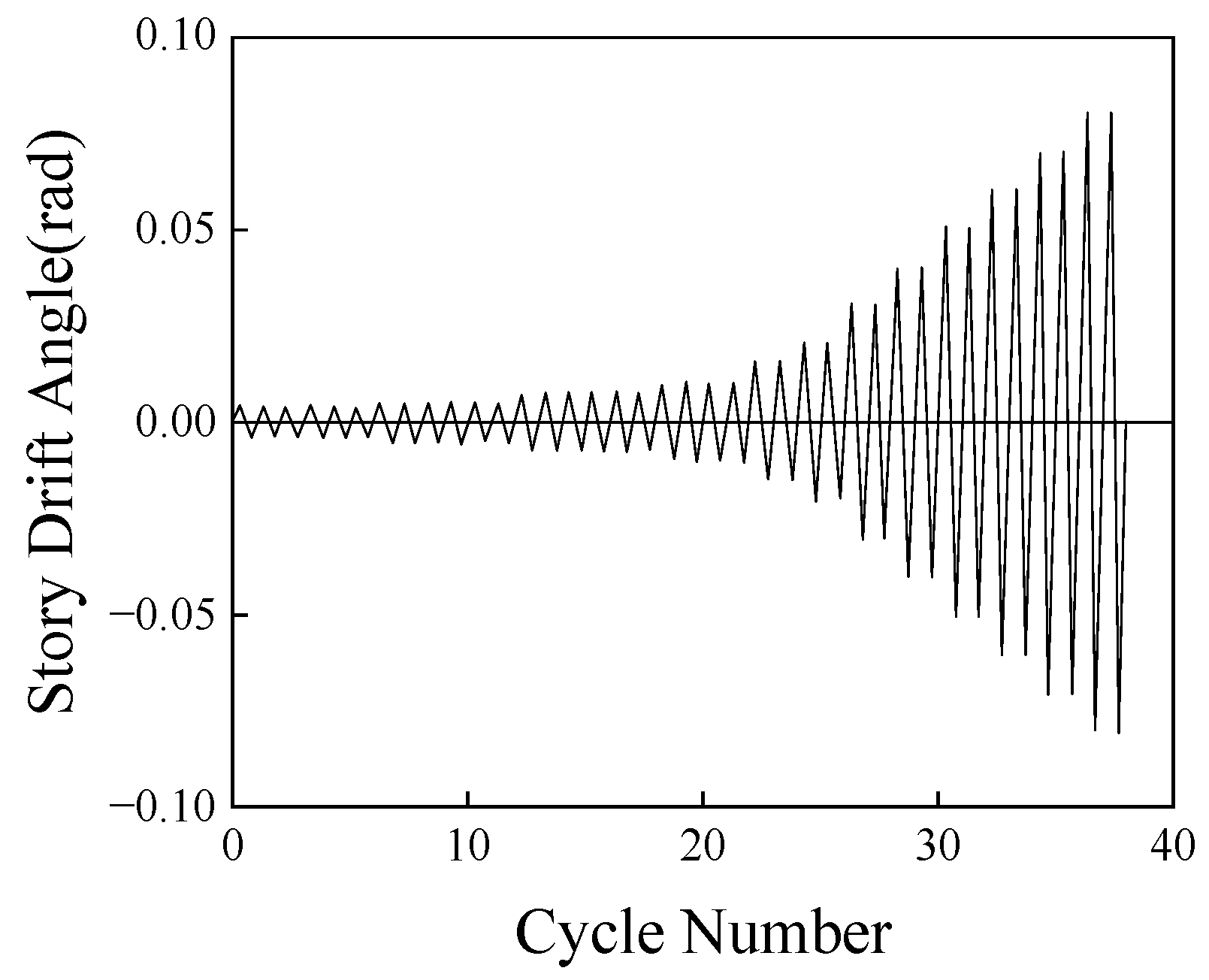
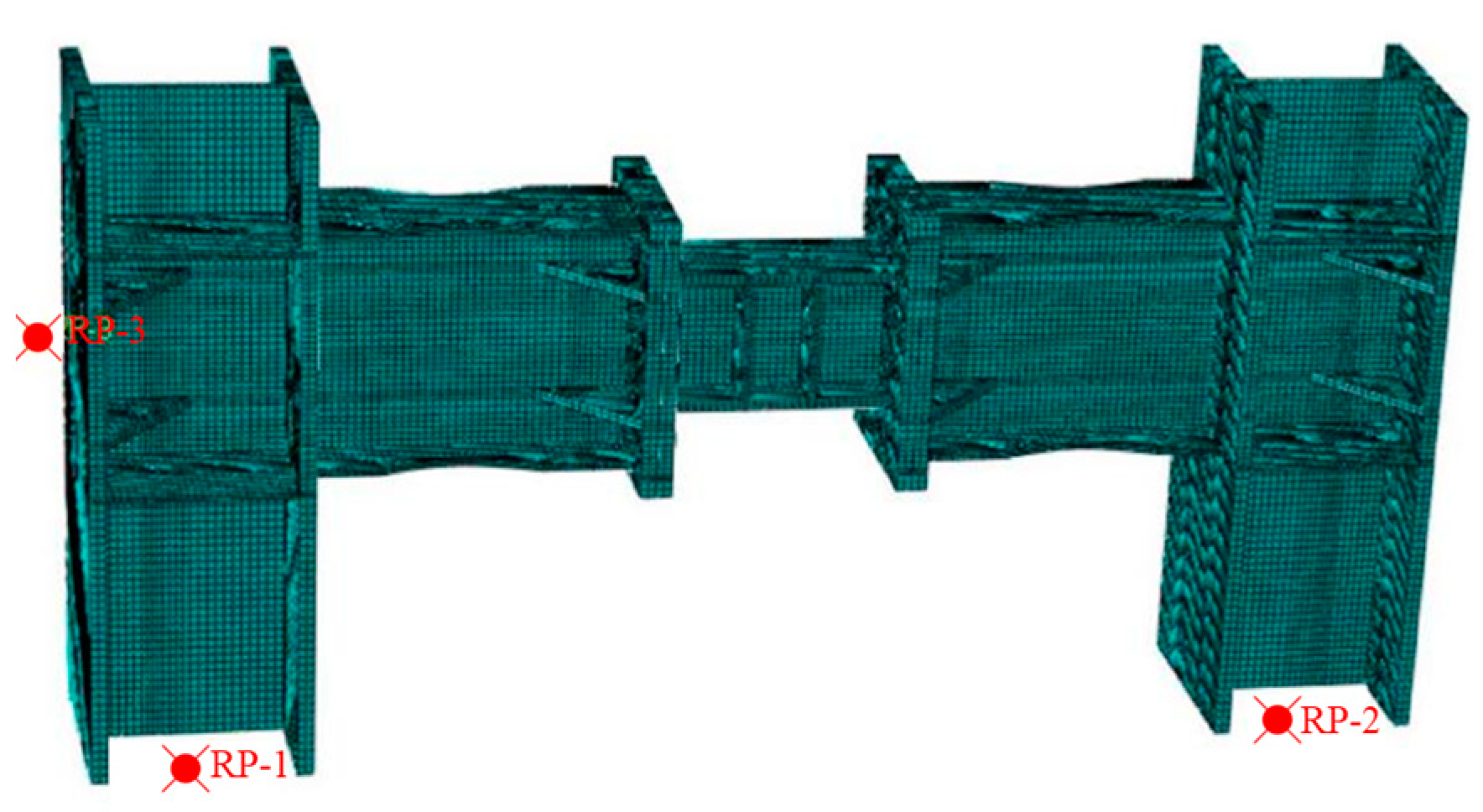
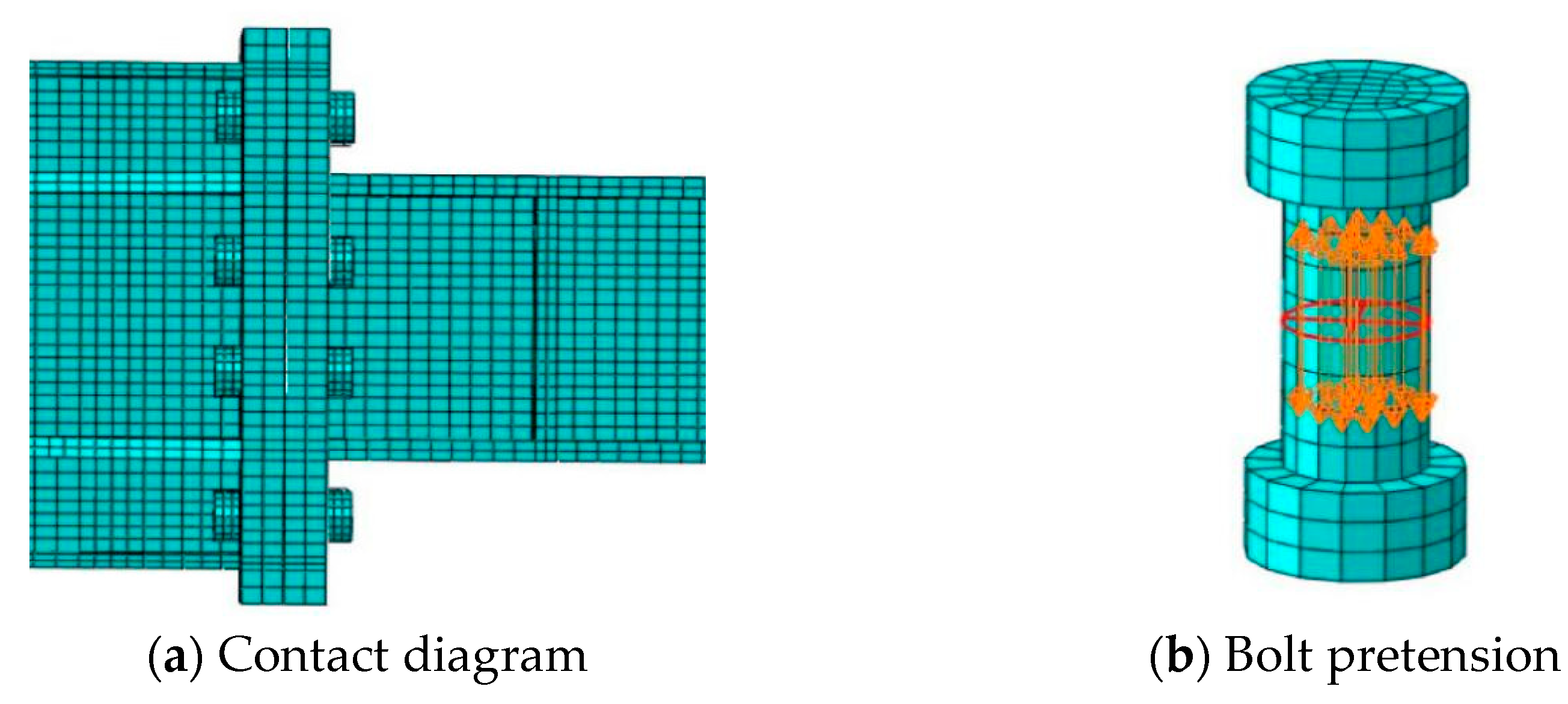


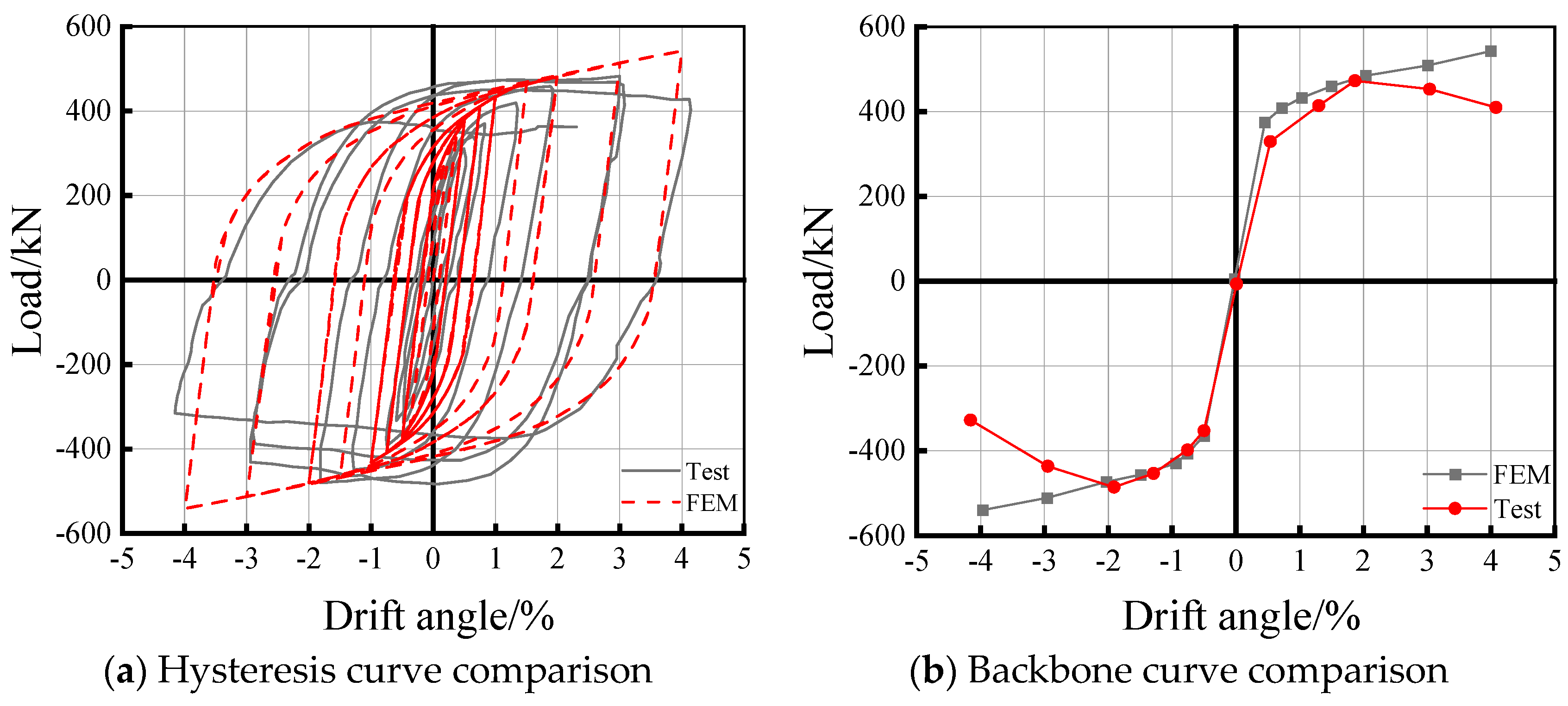
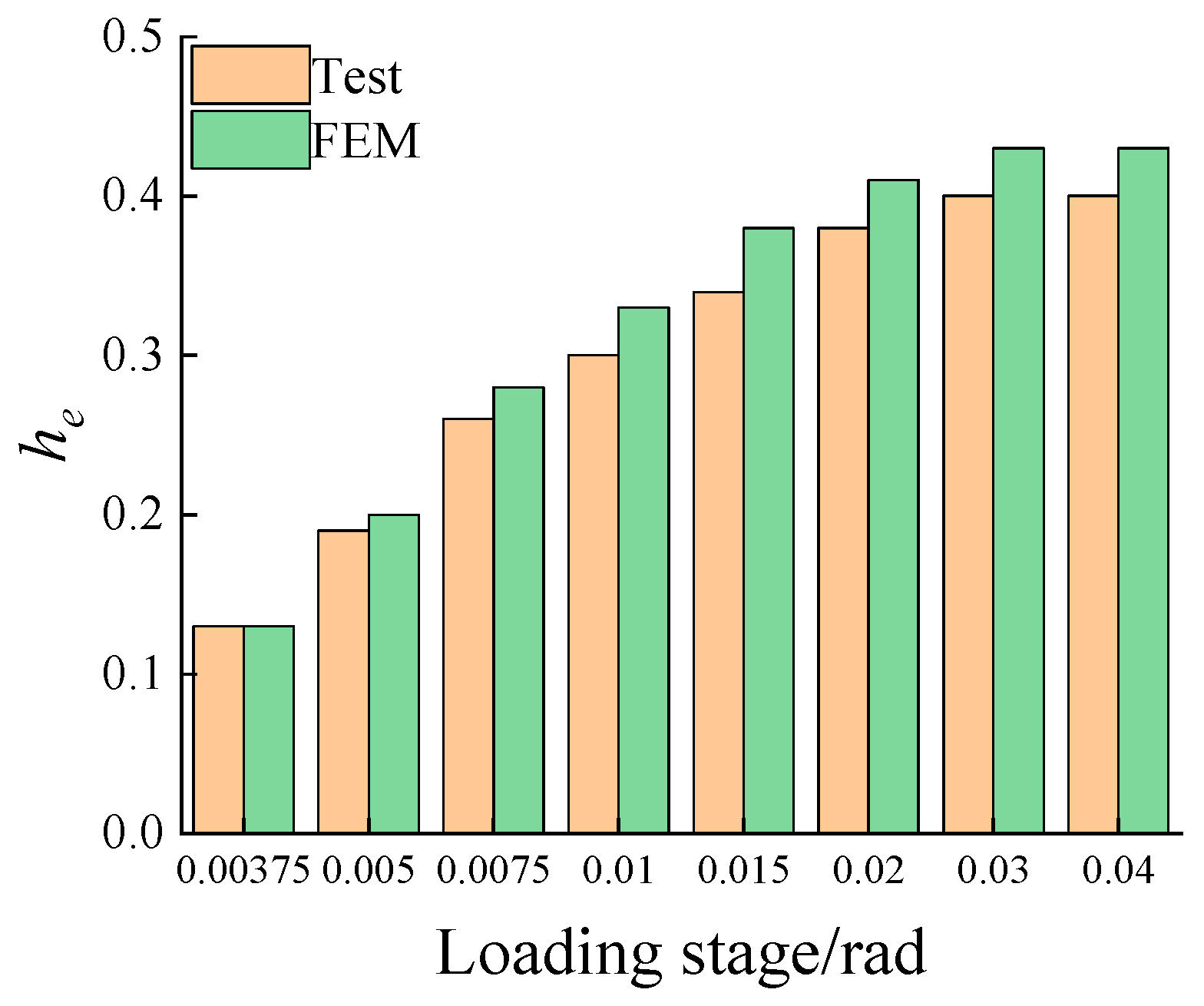
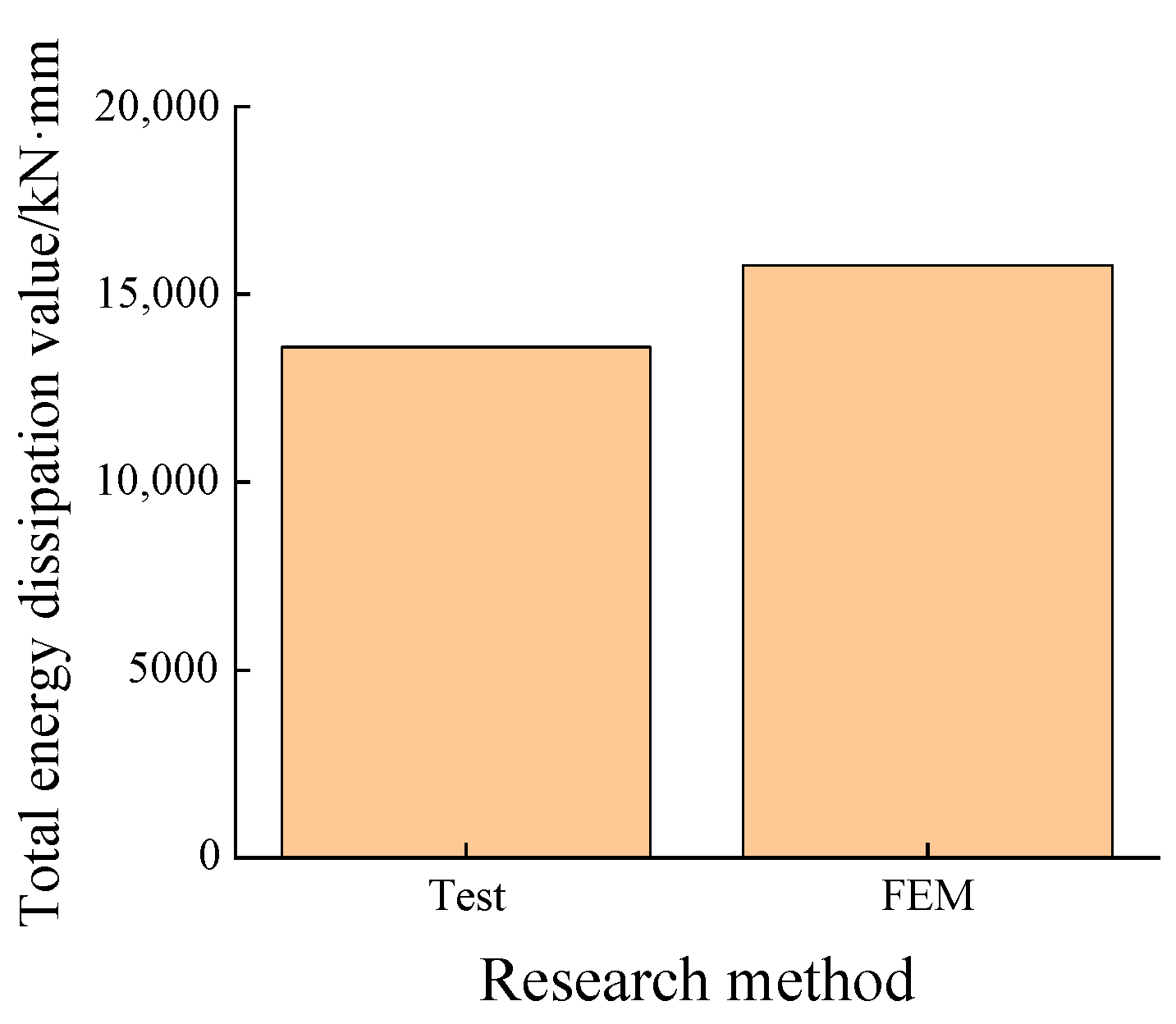

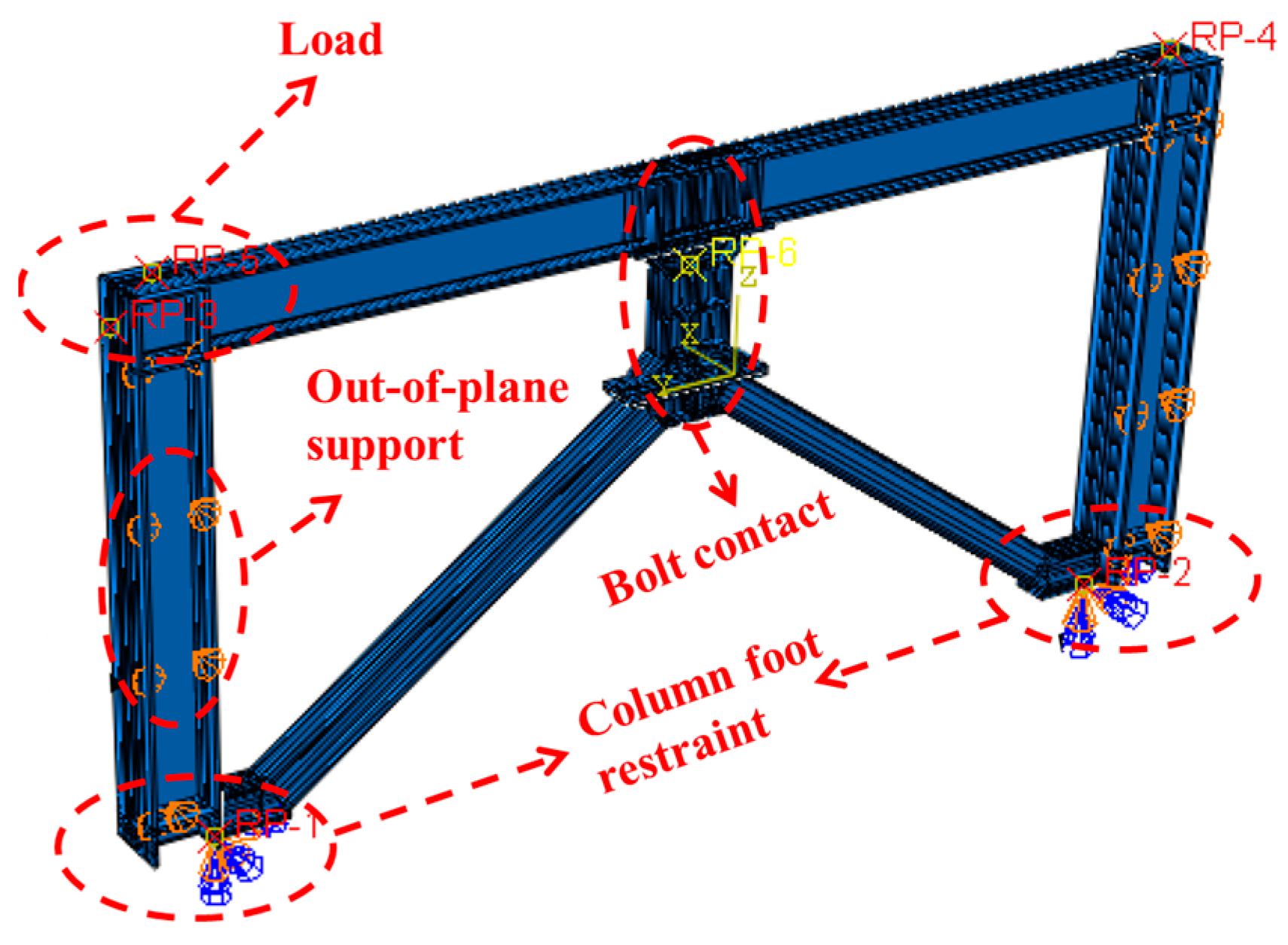
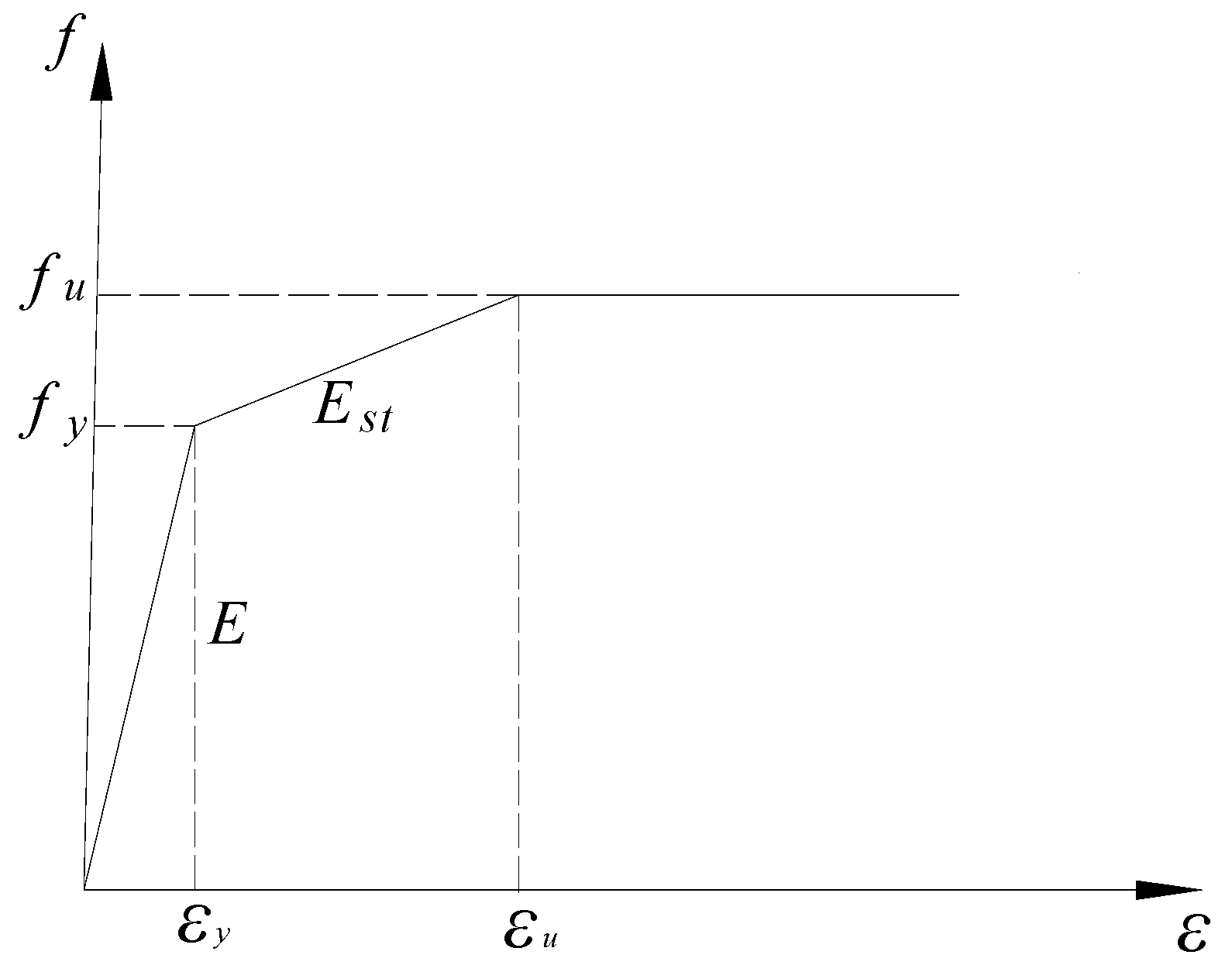
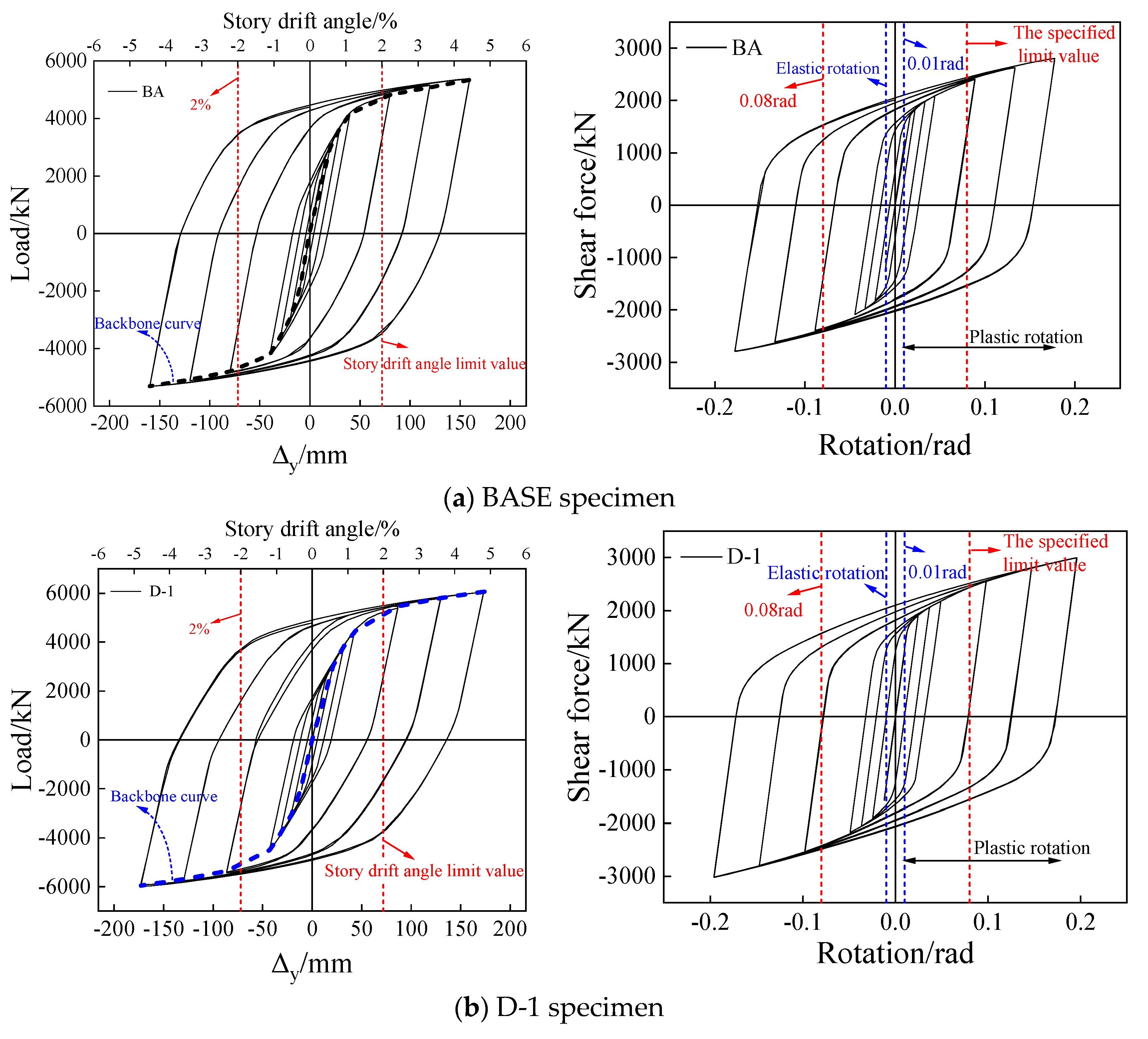
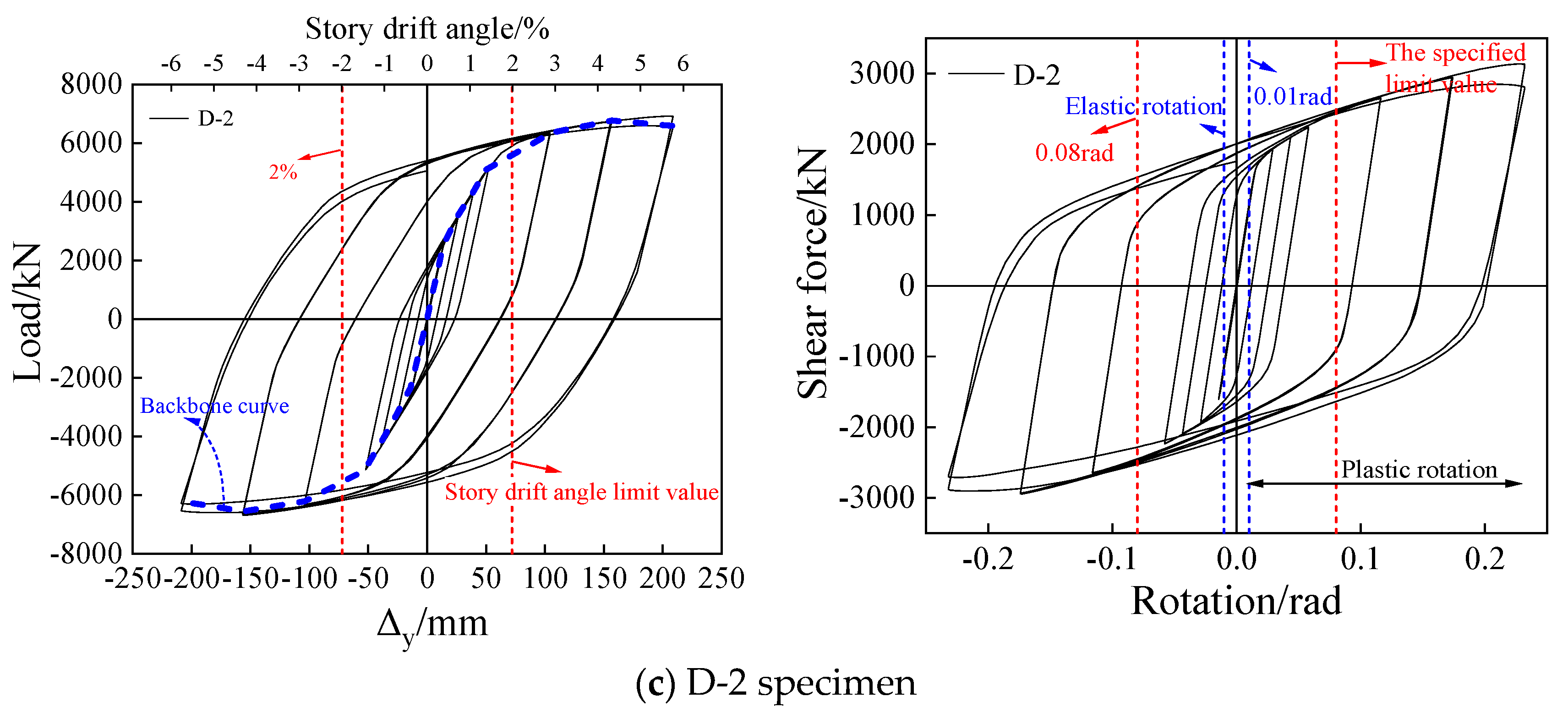

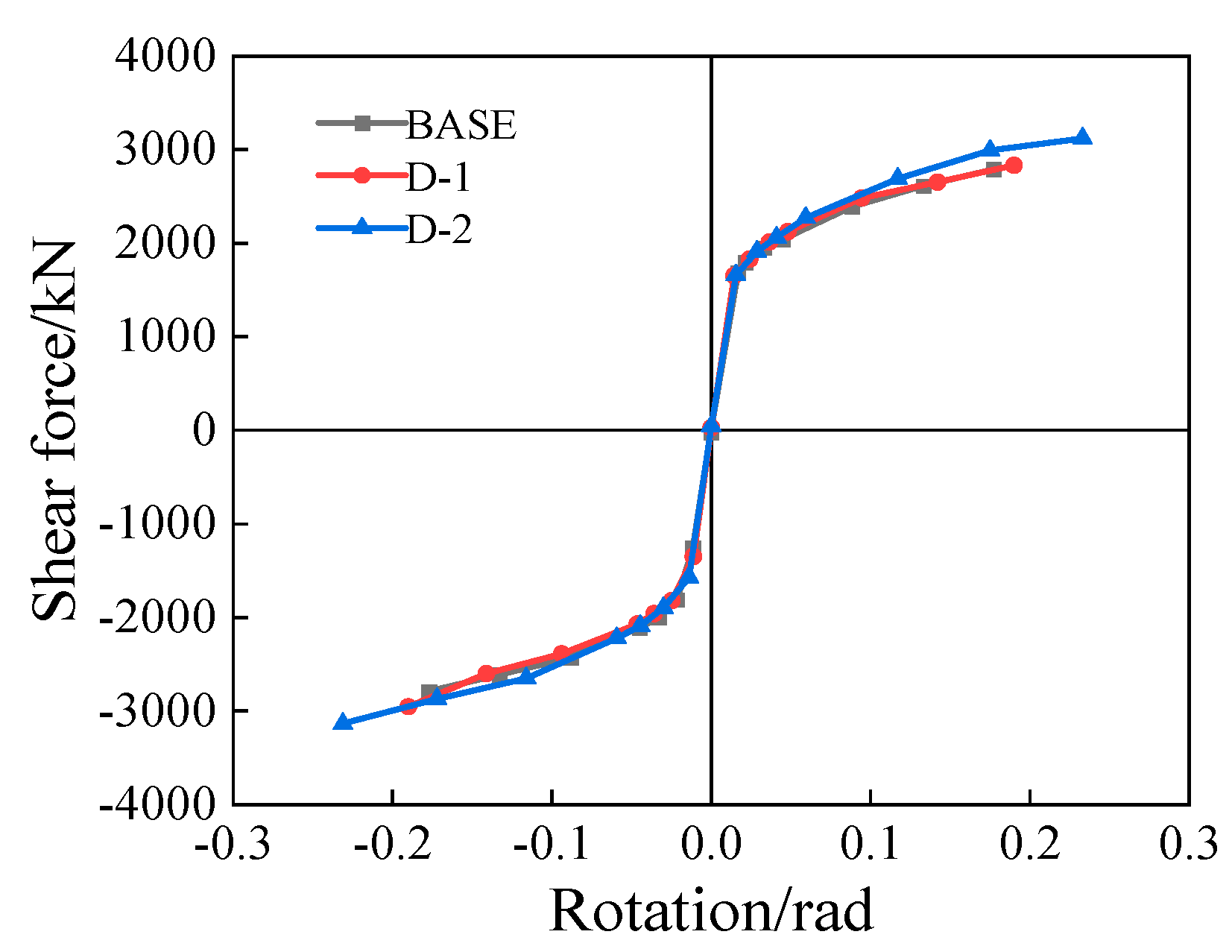




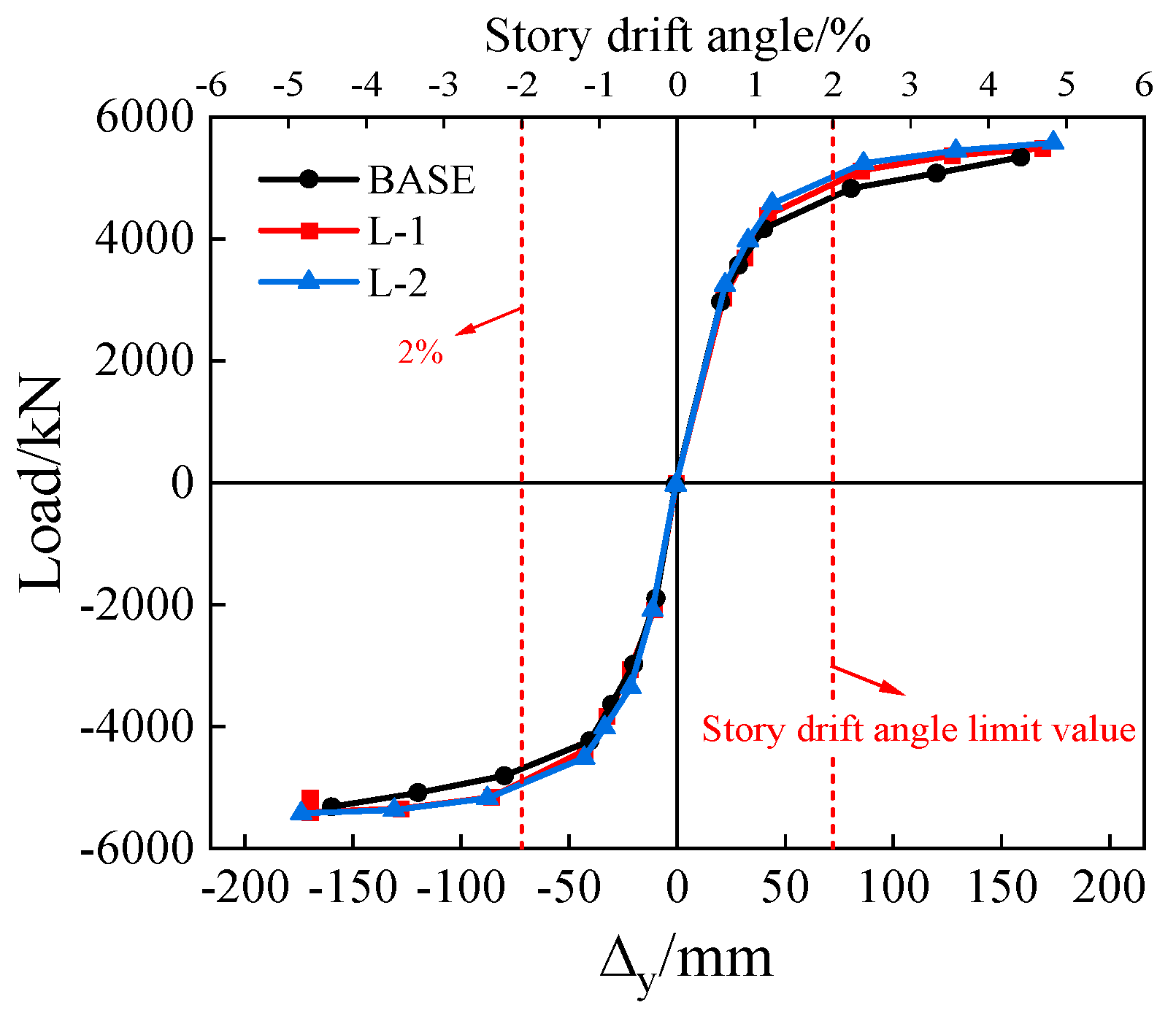




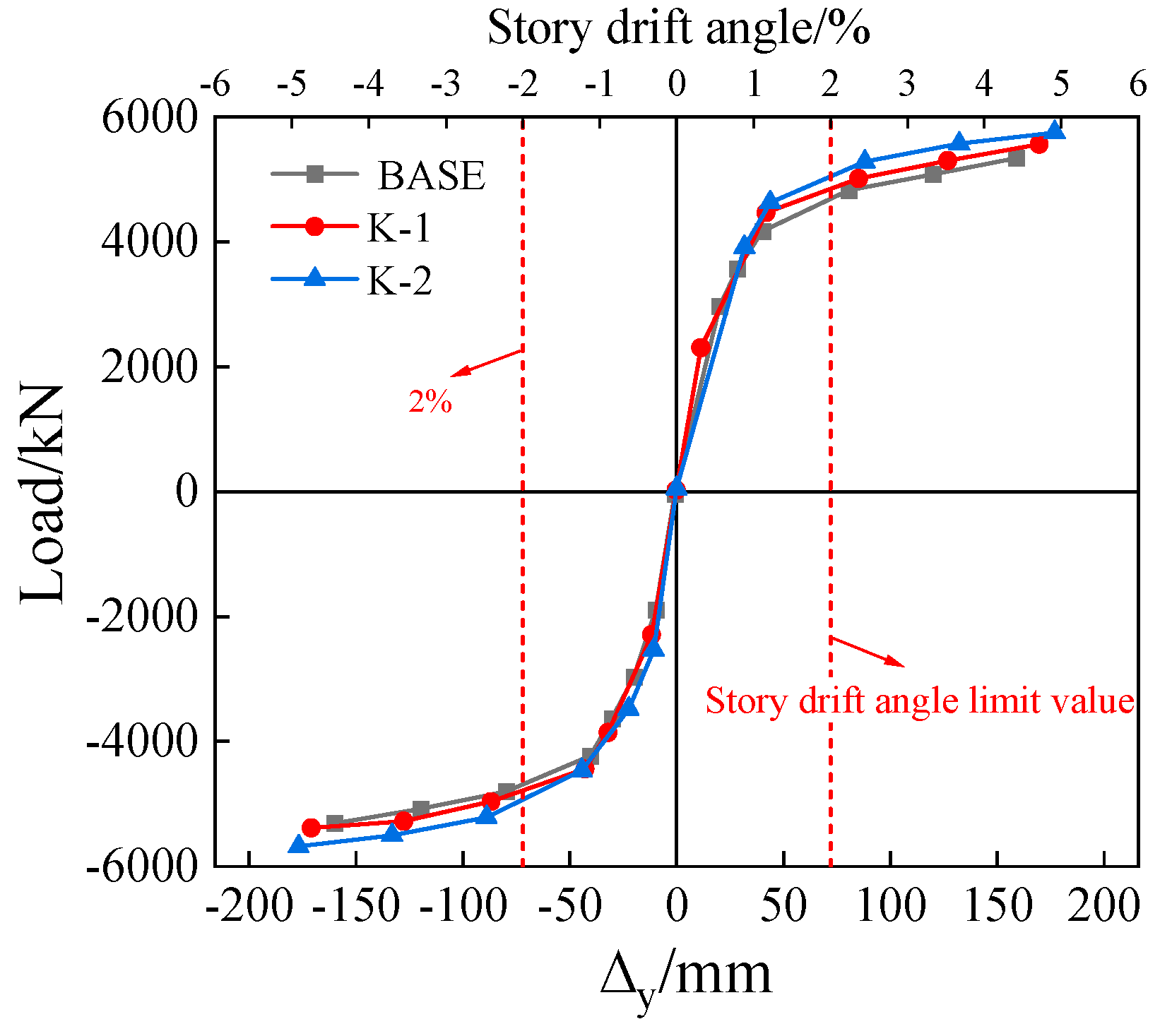




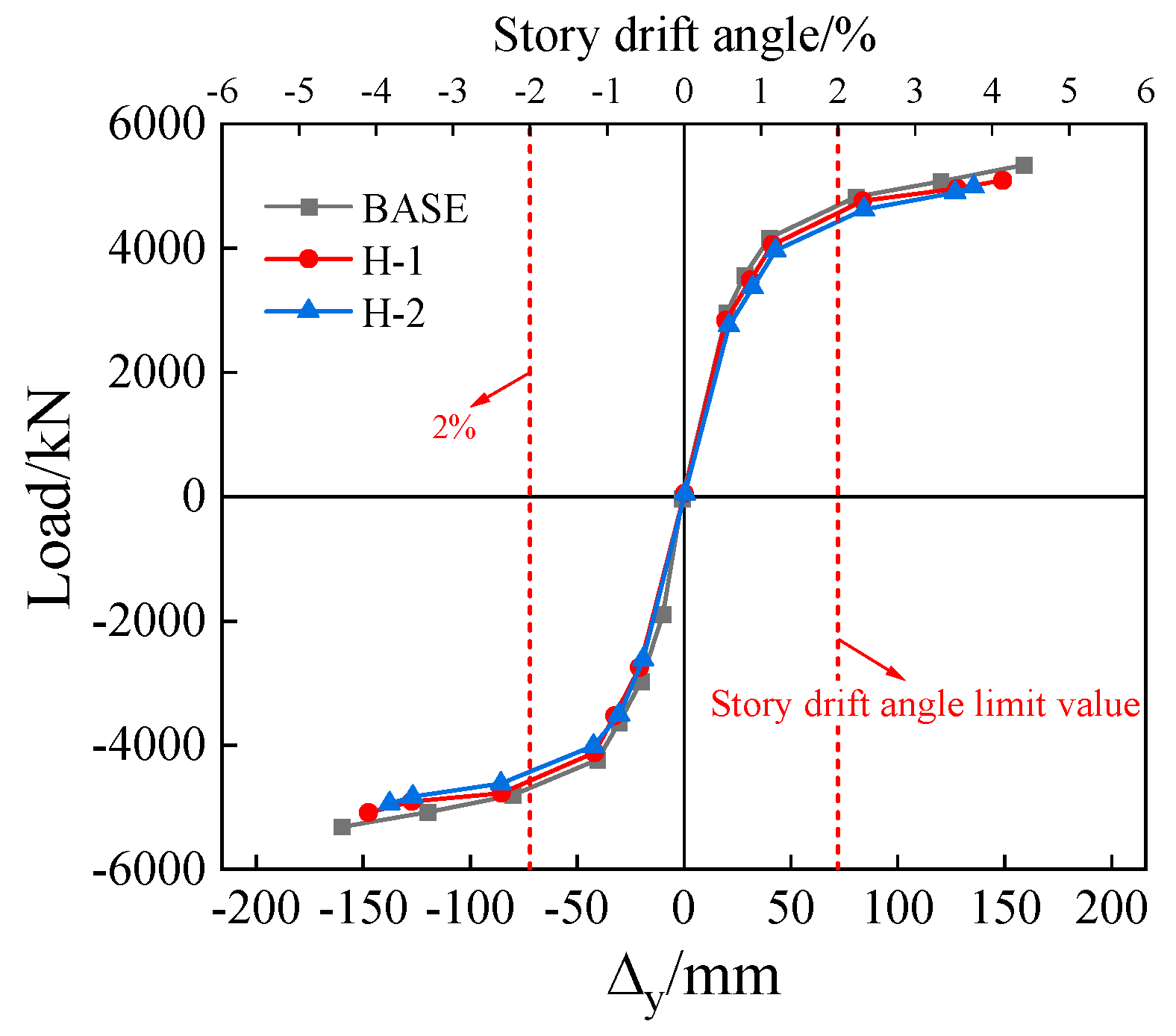
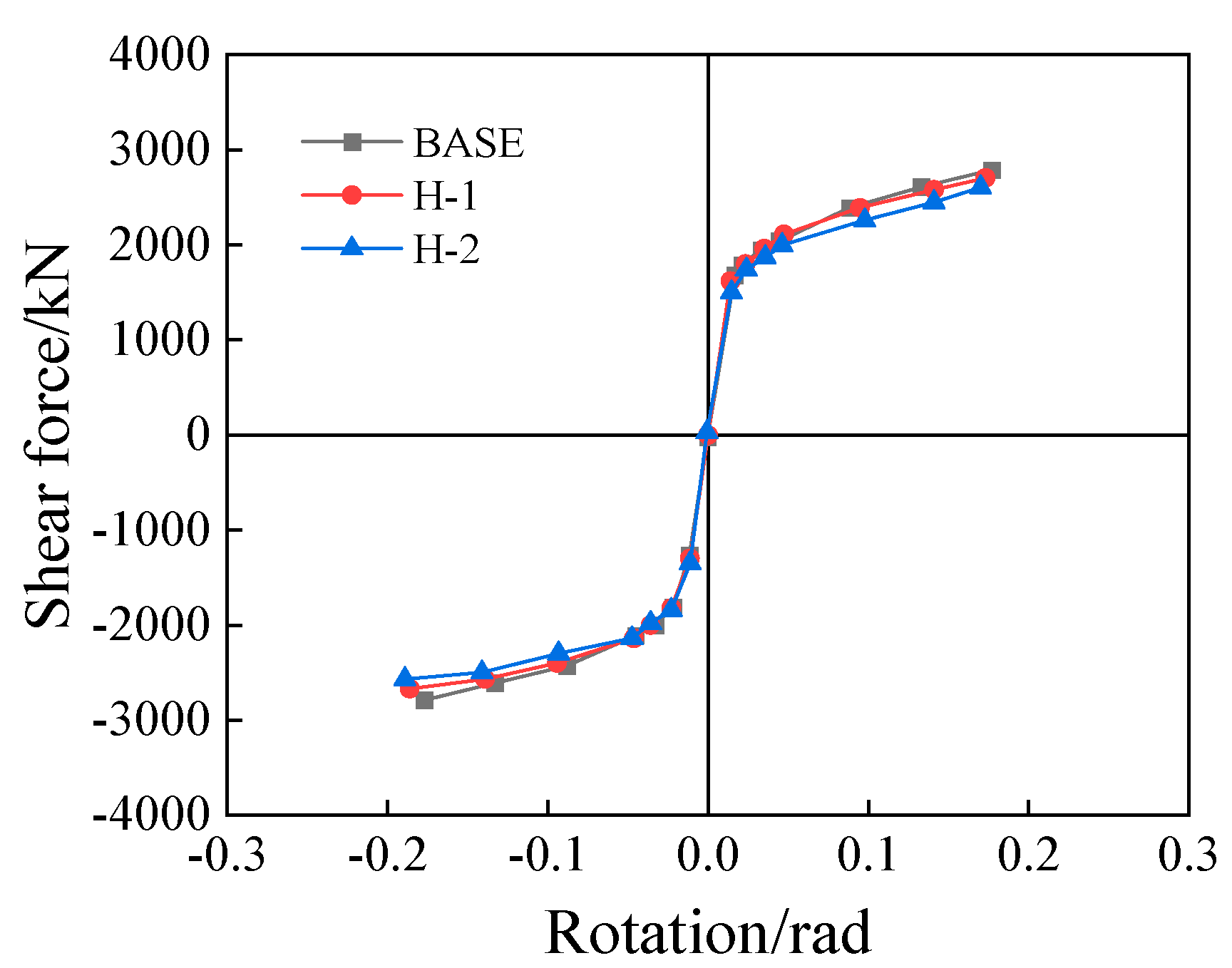


| Material Component | Steel Grade | Yield Strength fy (N/mm2) | Ultimate Strength fu (N/mm2) | Elastic Modulus (105 N/mm2) |
|---|---|---|---|---|
| Frame beam | ST37 | 370 | 488 | 2.0 |
| Link | ST37 | 302 | 404 | 2.0 |
| Component | Cross Section | Steel Grade |
|---|---|---|
| Frame column | H280 × 280 × 12 × 20 | ST52 |
| Frame beam | H300 × 150 × 6 × 8 | ST37 |
| Link | H170 × 120 × 5 × 12 | ST37 |
| End plate | 340 × 240 × 20 | ST52 |
| Stiffener at the link | 146 × 57 × 10 | ST52 |
| Loading Stage | 0.00375 Rad | 0.005 Rad | 0.0075 Rad | 0.01 Rad | 0.015 Rad |
|---|---|---|---|---|---|
| Energy dissipation value (kN·mm) | 121.31 | 184.32 | 497.65 | 803.47 | 1252.84 |
| Equivalent viscous damping coefficient he | 0.13 | 0.19 | 0.26 | 0.30 | 0.34 |
| Loading stage | 0.02 rad | 0.03 rad | 0.04 rad | - | - |
| Energy dissipation value (kN·mm) | 2113.04 | 3766.81 | 4857.52 | - | - |
| Equivalent viscous damping coefficient he | 0.38 | 0.40 | 0.40 | - | - |
| Loading Stage | 0.00375 Rad | 0.005 Rad | 0.0075 Rad | 0.01 Rad | 0.015 Rad |
|---|---|---|---|---|---|
| Energy dissipation value (kN·mm) | 105.01 | 238.03 | 543.73 | 881.44 | 1634.30 |
| Equivalent viscous damping coefficient he | 0.13 | 0.2 | 0.28 | 0.33 | 0.38 |
| Loading stage | 0.02 rad | 0.03 rad | 0.04 rad | - | - |
| Energy dissipation value (kN·mm) | 2442.11 | 4116.84 | 5808.51 | - | - |
| Equivalent viscous damping coefficient he | 0.41 | 0.43 | 0.43 | - | - |
| Component | Cross-Section | Steel Grade |
|---|---|---|
| Frame column | H450 × 450 × 15 × 30 | Q460 |
| Frame beam | H440 × 300 × 10 × 20 | Q460 |
| Link | H700 × 200 × 20 × 26 | Q355 |
| Energy-dissipating region | H460 × 200 × 20 × 26 | Q355 |
| Support diagonal rods | H250 × 240 × 14 × 20 | Q355 |
| End plate | 980 × 300 × 30 | Q460 |
| Specimen | Length of Link (mm) | Length of Energy-Dissipating Region (mm) | Steel for Link | Frame Beam, Frame Column | Span (mm) |
|---|---|---|---|---|---|
| BASE | 900 | 550 | Q355 | Q460 | 7200 |
| L-1 | 900 | 450 | Q355 | Q460 | 7200 |
| L-2 | 900 | 350 | Q355 | Q460 | 7200 |
| D-1 | 900 | 550 | Q355 | Q550 | 7200 |
| D-2 | 900 | 550 | Q355 | Q690 | 7200 |
| K-1 | 900 | 550 | Q355 | Q460 | 6600 |
| K-2 | 900 | 550 | Q355 | Q460 | 6000 |
| H-1 | 1050 | 550 | Q355 | Q460 | 7200 |
| H-2 | 1200 | 550 | Q355 | Q460 | 7200 |
Disclaimer/Publisher’s Note: The statements, opinions and data contained in all publications are solely those of the individual author(s) and contributor(s) and not of MDPI and/or the editor(s). MDPI and/or the editor(s) disclaim responsibility for any injury to people or property resulting from any ideas, methods, instructions or products referred to in the content. |
© 2024 by the authors. Licensee MDPI, Basel, Switzerland. This article is an open access article distributed under the terms and conditions of the Creative Commons Attribution (CC BY) license (https://creativecommons.org/licenses/by/4.0/).
Share and Cite
Chen, X.; Li, S.; Liang, G.; He, M. Numerical Parameter Analysis of High-Strength Steel Frame with Y-Eccentric Brace Using Variable Replaceable Link. Buildings 2024, 14, 2149. https://doi.org/10.3390/buildings14072149
Chen X, Li S, Liang G, He M. Numerical Parameter Analysis of High-Strength Steel Frame with Y-Eccentric Brace Using Variable Replaceable Link. Buildings. 2024; 14(7):2149. https://doi.org/10.3390/buildings14072149
Chicago/Turabian StyleChen, Xi, Shen Li, Gang Liang, and Min He. 2024. "Numerical Parameter Analysis of High-Strength Steel Frame with Y-Eccentric Brace Using Variable Replaceable Link" Buildings 14, no. 7: 2149. https://doi.org/10.3390/buildings14072149




